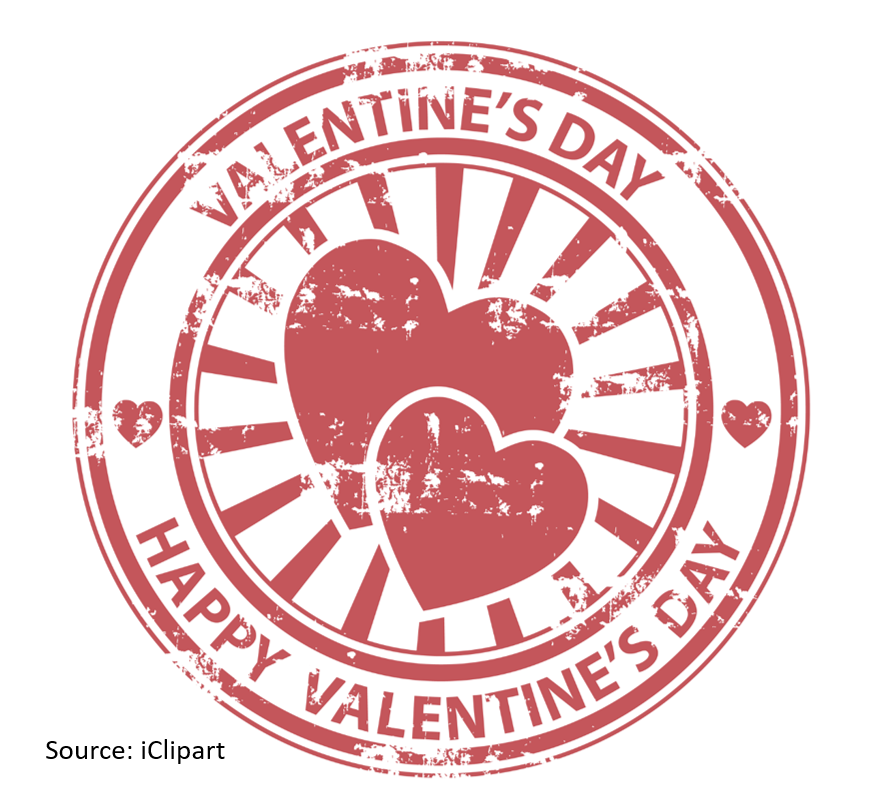Today is Valentine’s Day. Traditionally it is a day to exchange cards expressing deep and abiding affection for loved ones. According to analysts from Fronetics, the holiday can be traced back to “the late 400s [when] Gelasius declared February 14th as a day for honoring Saint Valentine. Over the years February 14th became associated with love and romance (1300s) and the exchange of cards (1600s). In the 1840s the first mass produced Valentine’s Day cards were sold in the US.”[1] In modern times, however, flowers, candy, and wine often accompany romantic cards. Seldom do people wonder how those tokens of affection made it to store shelves for purchase. Fronetics’ analysts note, “Over the years Valentine’s Day has become big business. 62% of adults in the US say that they celebrate the holiday. Spending for Valentine’s Day tops $13.9 billion. $8.9 billion is spent on sparkling wine (174,000 gallons are sold during the holiday week alone). The number of cards and gifts exchanged totals 150 million. Cupid gets the credit for the holiday, but really Valentine’s Day is the work of logistics and supply chain.” Exactly how much money is spent on various tokens of affection depends on who you ask. Francisco Ricaurte, UPS’s country manager for the Andean Countries, reports, “The National Retail Federation (NRF) anticipates that Americans will spend $2 billion on flowers this Valentine’s Day, which would account for 35 percent of the holiday’s spending. That trails just jewelry at $4.3 billion (given by 19 percent of shoppers) and an evening out at $3.8 billion (by 37 percent of shoppers).”[2] All the sparkling wine Fronetics analysts report being purchased for the holiday seems to have been overlooked by the NRF.
The Flower Supply Chain
Ricaurte notes, “Every February, shoppers depend on farmers in Colombia, Ecuador, Guatemala, the Dominican Republic and Costa Rica for a universal token of love and affection – fresh cut flowers.” Kyle Achter observes, “Getting fresh roses to your Valentine takes speed, the right temperature, and skill.”[3] He adds, “Like all perishable products, florals require specific temperatures to maintain freshness. Without the proper temperatures, flowers bloom and fade before they can be enjoyed by the recipient. Complicating this need for the ideal temperature, flowers travel a long way from field to store.” Ricaurte reports it takes dozens of Boeing 767 temperature-controlled cargo planes to ensure “retailers can be properly stocked with 8 million pounds of fresh cut blossoms in time for Cupid’s big day.”
The Candy Supply Chain
Keith Loria (@Freelancekeith) reports, “The season really comes alive in the candy and gift aisles, where heart-shaped boxes and special treats await. And candy plays a critical role as Valentine’s Day continues to evolve from a romantic holiday to a celebration of love and appreciation between friends and families. According to Eat Out Eat Well, during the Valentine’s Day season, $448 million is spent on candy. That’s 58 million pounds of chocolate and 36 million heart-shaped boxes.”[3] We’ve all seen the little candy hearts with brief sentiments of affection like “My Love.” Loria reports, “Necco’s Sweethearts — the one’s with the messages such as ‘Be Mine’ or ‘True Love’ — has long been one of the most popular Valentine’s Day gifts. The company said it made more than a billion candy hearts in 2017, including sugar-free and Spanish versions.” But when it comes to candy, Loria reports chocolate is king. “It”s clear that Americans crave chocolate on Valentine’s Day,” he writes. “In research conducted by Mars, 94% of consumers said they’d rather receive chocolate than flowers … and 92% said they planned to gift chocolate over a greeting card.”
Summary
No one wants to give or receive wilted flowers or melted chocolates. The logistics pipeline is what ensures that doesn’t occur. Jon Ackerman, Carrier Department Manager at LoadDelivered Logistics, explains, “With millions of perishables – like flowers and chocolates – being shipped … for Valentine’s Day, shippers must understand the importance of temperature-controlled transportation. Whether they choose over-the-road or intermodal services, transporting their goods in the correct temperature ensures that Valentine’s Day gifts arrive in the best condition possible.” When you’re out with your sweetheart tonight, spare a moment to thank supply chain professionals for making the moment perfect.
Footnotes
[1] Fronetics, “The Valentine’s Day Supply Chain By the Numbers,” Material Handling & Logistics, 13 February 2017.
[2] Francisco Ricaurte, “From Latin America With Love: The Valentine’s Day Challenge,” Longitudes, 13 February 2017.
[3] Kyle Achter, “The Logistics of Delivering Fresh Roses In Time for Valentine’s Day,” Supply Chain 24/7, 13 February 2014.
[4] Keith Loria, “Valentine’s Day candy goes beyond the heart-shaped box,” Food Dive, 14 February 2017.
[5] Jon Ackerman, “Sweet Supply Chain: The Importance of Logistics on Valentine’s Day,” LoadDelivered Logistics, 6 February 2014.





